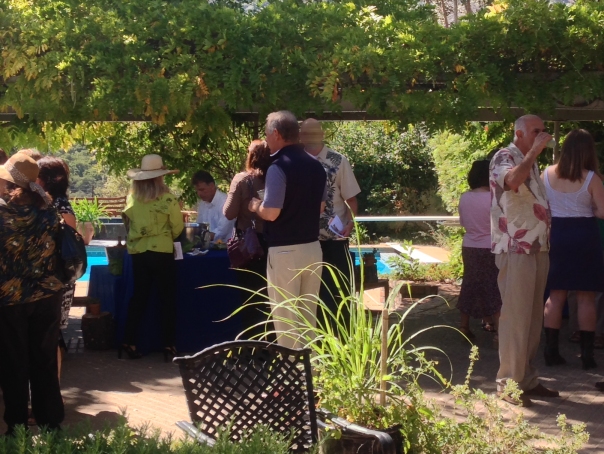 We need to instill a different culture in the consumption of beverages. This change would start with one itty, bitty urge in the direction of conservation for restaurateurs and their patrons. Not to mention a cool branding. In the process, it could save billions of tons of petroleum based waste.
We need to instill a different culture in the consumption of beverages. This change would start with one itty, bitty urge in the direction of conservation for restaurateurs and their patrons. Not to mention a cool branding. In the process, it could save billions of tons of petroleum based waste.
I give you – the straw. When did the straw become an absolutely essential appurtenance for every beverage? God gave us lips for crying out loud! Unless you are elderly, disabled, or a 2-year-old and are in need of a sippy cup, this utensil is superfluous.
Straws are made of plastic and yes, plastic is petroleum based, although we are making huge strides in other compostable bio-based eating accessories.
The reality is that only 27% of all plastics get recycled. The other 73% goes into landfills and particulate matter in the ocean.
The use of straws with beverages goes back to the Sumerians in 3000 BC. Straws were made of gold and lapiz and were presumably used to keep the settled matter at the bottom of home-brewed beer away from one’s palate. Modern day straws were patented by the creative and thirsty Marvin C. Stone, in 1888, whilst sipping a mint julep on his front porch on a hot day in Washington, DC. The straw of choice in those days was made from a type of rye grass. Although tremendously eco-friendly, Marvin did not care for the way it tainted his bourbon. He had the notion (after a few juleps I’m sure, as the most creative ideas appear at such auspicious moments) to take a strip of paper, wrap it around a pencil and apply glue, later perfecting his invention with wax.
Every beverage in most every corner bar and eatery provides you with a straw, even when one asks specifically for its deletion. Try it and you’ll see, even when you remind the well-intended server that you didn’t want a straw, they will take it out of your soda and throw it in the trash. When you order another drink, purposefully leaving the straw on your napkin to be used with the subsequent beverage, they will throw away the napkin and the straw, missing the point entirely.
Every restaurant, diner, bar, coffee house, and deli will insert a straw in your drink, happily toss it in the trash when you are finished, and provide you with a brand new tubular utensil with your next order even though you are drinking the same gin and tonic and possess the same lips.
This oral addiction has been totally engrained in the hospitality industry.
Paper straws are not common. They tend to get soggy, like the rye grass straw, especially with warm liquid. Take in point my Sikh friend who was in definite need of a straw for sipping his chai tea as his mustache and beard (the pruning of which is against his belief system) would coalesce foam remnants on his glorious grey facial cascade. The paper straw at Flora Grubb was a great and heartfelt concept but not exactly practical, not to mention the fact that they are not really earth-friendly either. They are derived from trees after all.
Sometimes a plastic straw is covered with a plastic sheath – both being discarded in regular trash (yikes, a double global assault!)
Let’s say you spend your afternoon at Starbucks on your laptop and drink three Caramel Machiattos, extra espresso, low-fat whatevers. Most patrons will garner three straws. Since it is the same beverage and you have the same mouth, harboring the same germs, wouldn’t it be environmentally prudent to remove the straw from your first oral orgasmic experience and re-use it for the rest of your laptop jabbing afternoon? After all, it has been marinated. Not to mention, straws give you upper lip lines, like those found on smokers’ faces.
Let’s also review the fact that straws are generally loaded by hand into a receptacle at the bar by the bar back, and then handled by the person making drinks. Now I’m sure that these fine servers wash their hands frequently, but…
This conceptual plea has been submitted to Starbucks. In fact, it went to the senior director of global policy who actually took it directly to the corporate Board of Directors in Seattle, a huge deal. As an author and conservationist, I was thrilled to even get that far. My profound disappointment ensued when the supposedly globally conscious Starbucks referred the issue to their internal ‘waste management’, also missing the point entirely…
And, let’s not forget the cost (both fiscally and environmentally) of manufacturing the straw, transporting the little culprits and the price of all that extra trash. Starbucks as well as all of our local dining establishments would not only look cool if they campaigned against straws, they would save tons of cash!
Are straws important for certain people like my Sikh friend and Stephen Hawking? Absolutely.
Are there millions of plastic straw particles swirling around in no less than five global garbage vortexes floating in our oceans? Yes.
Straws are occasionally appropriate. But, every day? With every beverage? For every person?
No way. We have got to get a collective grip!!!
How to contribute as a restaurateur:
We know it has been engrained in the industry, but perhaps an edict to not automatically insert that plastic culprit would be in order. Have your servers and bartenders have straws on hand, but trained to only give a straw upon request. 100% biodegradable bamboo stirrers are available for cocktails that need to be mixed. Maybe even print a small notice on your menu that says something resembling:
“In the interest of our environment and our passion to preserve it, this establishment endorses the conservation of our resources. We offer straws (a petroleum based product that is not recyclable or biodegradable) only upon request.
Thank you for your contribution for the health of our planet.”
At the Rio Grill in Carmel California, I did a small survey asking the fine patrons of Tony Tollner’s masterpiece restaurant if they would feel slighted if they were served a beverage without a straw. The unanimous vote was that they would not and would simply ask for one if need be.
How to contribute as a person who drinks beverages:
Simply ask for your beverage without a straw. Most times, you will get one anyway.
That is, until we start making a cultural change.
And right now, that’s all we’ve got – small stabs. But collectively, on a planet with billions of people, cultural changes could be the most influential.
One straw at a time.
Author and Conservationist, Brandon Wiggins


